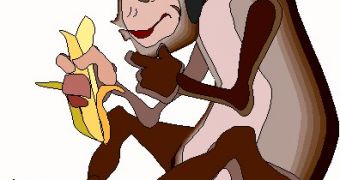This was indeed one of the most interesting species in our evolution: a mix between an orangutan and a gorilla. A new research shows that an extinct ape could swing from both branches and walk along on all fours.
But it is not clear if this is just an evolutionary dead end or a key step in the evolution of the tree-dwelling lifestyle, like seen in modern orangutans.
It appears that the 9.5-million-year-old fossil ape Hispanopithecus laietanus had fingers longer than those of a modern gorilla or human, but not as long as those found on an orangutan: the bone pattern is unique among all apes, alive or extinct. That permitted it to hang from tree branches, on the orangutan manner, but also walk on all fours along the larger branches pushing on its flat palms.
All mammal fingers have a bone called the metacarpal at their base (in the "hand"). In orangutans, both metacarpals and phalanges (digit bones) are extended, permitting them to grasp branches and climb trees. Ground-dwelling ape species like gorillas have shorter fingers, adapted to the knuckle walking.
But in Hispanopithecus, only the phalanges are extended, while the metacarpals are short, as seen in the gorillas.
"Hispanopithecus also was likely to have had a unique arrangement of ligaments in its fingers that allowed it to pull its fingers quite far back. These adaptations would have allowed it to move not only by grasping and swinging, but also by walking on its palms." said lead researcher Sergio Alm?cija at Barcelona Independent University in Spain
During the Miocene epoch, 23 to 5 million years ago, apes started diversifying into the modern species.
"Hispanopithecus may have been an ancestor of modern orangutans, or equally an evolutionary dead end," said C. Owen Lovejoy of Kent State University in Kent, Ohio, US.
"What did modern apes do? Did they go through a stage like Hispanopithecus, or did they elongate everything at the same time? During the Miocene, apes were much more diverse than they are now. Apes were just everywhere?and almost all of them have disappeared."

 14 DAY TRIAL //
14 DAY TRIAL //